Lulo Fruit: An Easy Guide To The Exotic Colombian Fruit
Explore the health benefits and side effects of this nutrient-dense fruit.
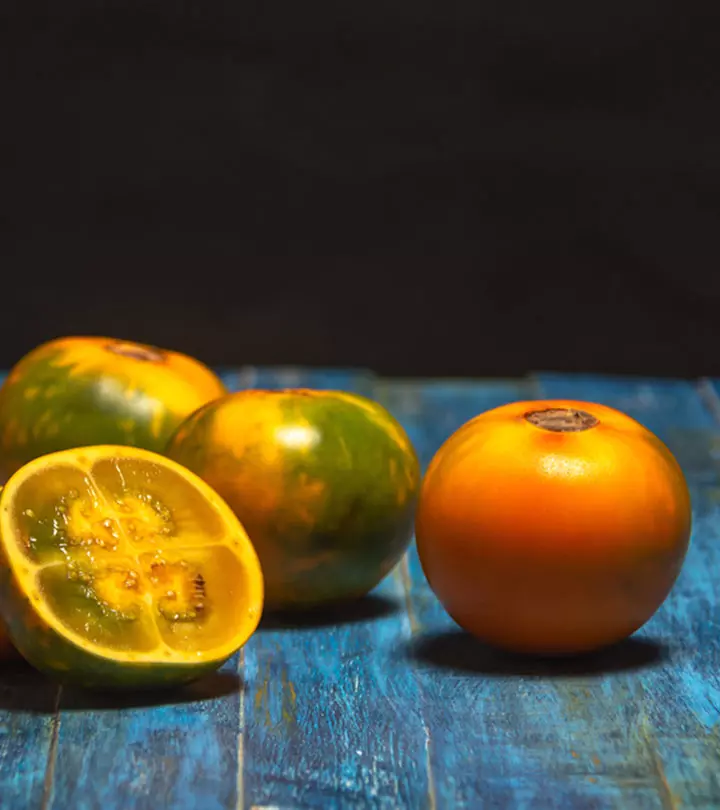
Image: Shutterstock
The lulo fruit is pulpy and nutrient-dense and is rarely available in the United States. It has a tart taste and is usually noticed by its unique smell. The benefits of lulo fruit are attributed to its rich nutrition profile. This unique fruit, often called naranjilla in some areas, is valued for its delicious flavor, numerous health benefits, and versatile use in cooking. The fruit may help boost immune system function, support gastrointestinal health, improve vision, reduce cholesterol levels, and potentially lower cancer risk. This exotic citrus fruit looks similar to an orange when observed from a distance. This article explores the health benefits, nutritional breakdown, and possible side effects of lulo. Keep reading to learn more.
In This Article
What Is Lulo Fruit?
Lulo fruit (solanum quitoense) is a delicious and tangy fruit that grows mostly in the western parts of South America. It belongs to the nightshade family and resembles an orange from the outside and a tomato from the inside. Lulo goes by quite a few names— lulo in Colombia, naranjilla (meaning little orange in Spanish) in Ecuador, Panama, and some areas of the United States.
The lulo fruit, though available throughout the year in places where it grows, is very difficult to find in other parts of the world. The naranjilla plant is very susceptible to pests when cultivated. That’s why lulo does not do well as a cultivated crop. The fruit itself also does not handle transit well which makes it ill-suited for export. Even if you don’t get your hands on the fresh fruit, chances are that you can get lulo juice or lulo flavored ice cream to get a taste of it.
Sally a travel blogger, shares her experience of tasting several unique fruits in Columbia. She put the Lulo or Naranjilla fruit in the number one position and wrote, “Lulo is almost certainly my favorite fruit discovery. Its bold tart flavor practically explodes in your mouth. With a bright zing all its own, lulo is truly a fruit that one must experience for oneself. It makes delicious green smoothies, delectable sorbets and to this day I daydream of marketing it worldwide(i).”
Now that you know what a lulo fruit is, let us explore what it has to offer in terms of its nutrients.

Key Takeaways
- Lulo fruit is rich in beta carotenes, carotenoids, and other essential vitamins and minerals.
- It helps maintain gastrointestinal health, boosts immunity, improves vision, and promotes heart health.
- You can have lulo fruit raw, make a juice, jam, or jelly with it, and add it to stews and curries.
- Lulo fruit may interact with hypertension medication or cause an allergic reaction.
Lulo Fruit Nutritional Facts
Lulo has a nutrient-rich profile, especially when it comes to micronutrients as shown below (1).
| Nutritional Values Of 1 Cup (120 g) Thawed Lulo Fruit (Naranjilla) | |||
|---|---|---|---|
| Energy | 30 kcal | Folate, total | 3.6 µg |
| Protein | 0.528 g | Vitamin A, RAE | 33.6 µg |
| Total lipid (fat) | 0.264 g | Carotene, beta | 400 µg |
| Carbohydrates | 7.08 g | Carotene, alpha | 4.8 µg |
| Dietary Fiber | 1.32 g | Cryptoxanthin, beta | 12 µg |
| Sugars | 4.49 g | Vitamin A, IU | 682 IU |
| Iron, Fe | 0.42 mg | Lutein + zeaxanthin | 359 µg |
| Magnesium, Mg | 13.2 mg | Potassium, K | 240 mg |
| Phosphorus, P | 14.4 mg | Vitamin C, total ascorbic acid | 3.84 mg |
| Zinc, Zn | 0.12 mg | Vitamin B-6 | 0.128 mg |
| Calcium | 9.6 mg | Vitamin E | 0.9 mg |
The variety of nutrients in lulo fruit gives it great potential as a tasty and healthy functional food. Let us dive a little deeper to understand some of the potential benefits of the lulo or “Colombian” fruit.
8 Surprising Health Benefits Of Lulo Fruit
Lulo has a great nutritional profile with its plethora of beta carotenes, carotenoids, and other vitamins and minerals (1). It is considered to be good for the immune system, cardiovascular system, and skeletal system, along with many other health benefits:
- May Boost Immunity
Lulo fruit is high in vitamin C and vitamin A, both of which work to boost your immune system.
Vitamin C helps to clear out toxins and free radicals from your body and stimulates the phagocytic cells, which defend your body against foreign pathogens and other infectious diseases. Vitamin C is known to prevent respiratory and systemic infections as well (2). Vitamin A, on the other hand, plays an important role in your body’s immune function. It has anti-inflammatory properties and regulates cellular immune response (3).
- May Boost Gastrointestinal Health
Lulo may be considered a fiber-rich fruit, and one of the dietary fibers it contains is pectin. Research suggests that incorporating dietary fiber in your diet may help maintain your gastrointestinal health and eliminate cramping, bloating, constipation, and gastric ulcers. Pectin, especially, has been associated with increased beneficial bacteria in the intestinal tract and lowered risk of infections (4).
- May Improve Vision
Lulo fruit contains zinc, vitamin A, C, E, and carotenoids— the nutrients linked with good eye health and reduced risk of age-related vision impairment (5), (6). A study suggests that beta carotene, an important carotenoid in lulo fruits, can significantly lower the risk of age-related damage in the retina when taken in combination with vitamin E, vitamin C, and zinc (7).
- May Reduce Cholesterol And Boost Cardiovascular Health
Lulo fruit is low in fats and high in fiber and several micronutrients. Research suggests that dietary fiber can reduce LDL cholesterol and reduce your risk of a heart attack (8). The presence of spermidine in Lulo fruit may also help to control high blood pressure, which is a risk factor for cardiac arrest (9). The rich variety of vitamins and minerals in lulo fruits can also boost heart health by improving circulation and reducing oxidative stress. (10).
- May Improve Bone Strength
Lulo is a good source of the three nutrients, calcium, magnesium, and phosphorus, that play key roles in bone development. Therefore, adding lulo to your diet may benefit your bones and prevent conditions like osteoporosis and arthritis. According to a study, these three nutrients work interdependently and only supplementation with calcium alone is not enough for bone health if you are deficient in any of the other two minerals (11). Vitamin C, which is abundant in lulo fruit, is also important for the production of collagen in the bone matrix and removing the free radicals that may damage bones (12).
- May Have Anticancer Potential
The antioxidant-rich profile of lulo may have anticancer effects on the body. Research-based evidence suggests a strong link between oxidative stress and cancer. Antioxidants like vitamin E, vitamin C, and beta carotene are powerful free radical scavengers in the body. They work to neutralize oxidative stress, which may lower your risk for certain cancers. That being said, more research is needed to completely understand the role and efficacy of antioxidants in cancer prevention (13).
- May Aid In Skin Care
Lulo is a good source of vitamin C. Research shows vitamin C is strongly associated with the production of collagen. Collagen is responsible for your smooth and elastic skin. As you age, your body slows down collagen production. Vitamin C intake may help boost collagen production and maintain healthy skin by also countering skin damage from UV rays (14).
- May Detoxify The Body
Lulo fruit offers potential detoxification benefits for the blood due to its high antioxidant content. Although there is no direct research linked to it, lulo is rich in vitamins A, C, and E as well as flavonoids and polyphenols, and their antioxidant properties combat free radicals, reducing oxidative stress and aiding in detoxification (15). These antioxidants assist in neutralizing toxins and impurities in the bloodstream, promoting overall health by supporting the body’s natural detoxification processes. However, it is essential to maintain a balanced diet and healthy lifestyle to support effective detoxification.
There is a lack of focused research into the potential health benefits of lulo fruit specifically. Even then, adding lulo fruit to a balanced diet may be a great (and delicious) way to incorporate some of the essential micronutrients it has to offer. How exactly do you use and enjoy lulo fruit? Let’s find out!
 Quick Tip
Quick TipHow To Use Lulo Fruit
Lulo is a yummy and healthy fruit that you can enjoy in numerous ways. Here are a few popular ways in which the lulo fruit is consumed.
- You can have lulo raw. Halve the fruit and simply scoop out the white pulp with a spoon to eat it. Locals enjoy naranjilla fruit with a pinch of salt.
- You can make a glass of refreshing lulada (or “jugo de lulo”, as they call it in Spanish), a freshly blended juice with lulo pulp, sugar, lime juice, and water.
- You can use the strained lulo pulp to make jams and jellies.
- Locals make lulo wine by fermenting the fruit juice.
- The pulp of lulo fruits can be used as a filling for baked goodies that call for tartness.
- Lulo can be added to rich stews and curries that require an acidic ingredient.
- You can make a tangy and delicious sauce with lulo.
- Lulo can be turned into delicious popsicles.
 Did You Know?
Did You Know?Now that you know of the many ways to enjoy this citrus-like fruit, let’s see if it possesses any risk of side effects or allergies.
Possible Side Effects Of Lulo Fruit
There is a lack of evidence suggesting serious side effects of lulo fruit consumption. However, there are certain precautions that you may take to avoid any adverse reactions.
- Allergic Reaction To Lulo
While lulo is generally safe for most people, it is important to be aware of potential allergic reactions, especially for those with sensitivities to nightshade plants. Lulo belongs to the nightshade family. So, if you are allergic to brinjals, tomatoes, or other nightshade family members, you may be prone to be allergic to lulo fruit as well. Therefore, it is best to consult with a healthcare provider before incorporating lulo in your diet.
- Lulo Fruit Hair May Cause Irritation To Sensitive Skin
Some varieties of lulo have fine white hair on the orange smooth skin of the fruit. If you have sensitive skin, you may feel irritation on touching those fine hairs.
- May Interact With Hypertension Medication
Lulo is a rich source of potassium which has been shown to lower blood pressure, more significantly in those with existing hypertension. Though lulu can help keep your blood pressure in check, it may potentially interact with hypertension (high blood pressure) medication (16), (17). Thus, if you are taking prescription drugs for your hypertension, it is best to be careful and consult your physician before adding lulo to your diet.
Lulo – the exotic fruit that looks like an orange from the outside and like a green tomato when you cut it up – is packed full of nutrients, especially antioxidants. It grows wildly in parts of Southern America. Sadly, it is not well known in other parts of the world because it is too delicate to tolerate the transportation necessary for exports. Locals enjoy the tang of lulo in jellies, jams, and popsicles and make a deliciously refreshing juice called the “lulada” with fresh lulo pulp. Advances in food technology may make it possible for you to get introduced to the flavor and nutrient profile of lulo by using it as an extract or flavoring agent in popular edibles in the near future.
Infographic: Top 5 Health Benefits Of Lulo Fruit
Lulu is a nutrient-dense citrus fruit, known for its numerous health benefits. It is prized for its tangy flavor and vibrant orange pulp. Lulo, with its high fiber content, supports digestive health and helps maintain a balanced gut microbiome. The infographic below lists the top five reasons this fruit should be a part of your daily routine. Check it out.
Illustration: StyleCraze Design Team
Lulo fruit is a nutrient-dense citrus fruit with a tart taste. This fruit has a unique smell and looks similar to an orange. There are numerous benefits of lulo fruit. This fruit is rich in beta-carotene and various vitamins and nutrients. It may boost immune health, improve gastrointestinal health, lower the risk of infections, enhance vision, and reduce cholesterol levels. It can be eaten raw or used to make jams or jellies. However, lulo may cause allergic reactions and irritation and interact with hypertension medications. Hence, check with your doctor before consuming these fruits to avoid their adverse reactions. If you’re exploring exotic options, consider trying mamoncillo, another tropical delight that shares a similar zestful appeal.
Frequently Asked Questions
Is lulo a kiwi?
No. Lulo fruit might resemble a kiwi but it belongs to the nightshade family.
Is lulo a persimmon?
No. While both fruits have a bright orange outer covering, persimmon has orange sweet flesh while lulo has greenish yellow tart flesh.
Does lulo grow in Florida?
Yes. Lulo (or naranjilla) is grown in southern Florida, usually near the sea level.
Check out the following video to uncover 19 scientifically backed health benefits of the lulo fruit. It also shares its nutritional advantages and explains why it is a powerhouse for enhancing your health and wellbeing.
Personal Experience: Source
StyleCraze's articles are interwoven with authentic personal narratives that provide depth and resonance to our content. Below are the sources of the personal accounts referenced in this article.
(i) The Fruits of the Seasonhttps://adventuressetravels.wordpress.com/2010/10/16/the-fruits-of-the-season/
References
Articles on StyleCraze are backed by verified information from peer-reviewed and academic research papers, reputed organizations, research institutions, and medical associations to ensure accuracy and relevance. Read our editorial policy to learn more.
- ‘Naranjilla (Lulo) Pulp’ ‘Frozen’ Unsweetened
https://fdc.nal.usda.gov/fdc-app.html#/food-details/167790/nutrients - Vitamin C and Immune Function
https://www.ncbi.nlm.nih.gov/pmc/articles/PMC5707683/ - Role of Vitamin A in the Immune System
https://pubmed.ncbi.nlm.nih.gov/30200565/ - Effects of Dietary Fiber and Its Components on Metabolic Health
https://www.ncbi.nlm.nih.gov/labs/pmc/articles/PMC3257631/ - Identifying Carotenoids and Phenolic Compounds in Naranjilla ‘(Solanum Quitoense Lam. Var. Puyo Hybrid)’ an Andean Fruit
https://pubmed.ncbi.nlm.nih.gov/19053383/ - Nutrients for the Aging Eye
https://www.ncbi.nlm.nih.gov/labs/pmc/articles/PMC3693724/ - ‘A Randomized’ ‘Placebo-Controlled’ Clinical Trial of High-Dose Supplementation with ‘Vitamins C and E’ ‘Beta Carotene’ and Zinc for Age-Related Macular Degeneration and Vision Loss: Areds Report No. 8
https://pubmed.ncbi.nlm.nih.gov/11594942/ - Cholesterol-Lowering Effects of Dietary Fiber: A Meta-Analysis
https://pubmed.ncbi.nlm.nih.gov/9925120/ - Spermidine Derivatives in Lulo (Solanum quitoense Lam.) Fruit: Sensory (Taste) versus Biofunctional (ACE-Inhibition) Properties
https://pubmed.ncbi.nlm.nih.gov/27292771/ - Role of Vitamins in Cardiovascular Health and Disease
https://www.researchgate.net/publication/287414135_Role_of_vitamins_in_cardiovascular_health_and_disease - ‘Monitoring Bone Changes Due to Calcium’ ‘Magnesium’ and Phosphorus Loss in Rat Femurs using Quantitative Ultrasound
https://www.ncbi.nlm.nih.gov/labs/pmc/articles/PMC6086864/ - Vitamin C and Bone Health: ‘Evidence from Cell’ Animal and Human Studies
https://pubmed.ncbi.nlm.nih.gov/26343111/ - Are Antioxidants Helpful for Disease Prevention?
https://www.ncbi.nlm.nih.gov/labs/pmc/articles/PMC3093095/ - The Roles of Vitamin C in Skin Health
https://www.ncbi.nlm.nih.gov/pmc/articles/PMC5579659/ - Identifying carotenoids and phenolic compounds in naranjilla (Solanum quitoense Lam. var. Puyo hybrid), an Andean fruit
https://pubmed.ncbi.nlm.nih.gov/19053383/ - Probiotics and Other Bioactive Compounds with Proven Effect Against Obesity and Hypertension: Food Design Opportunities from Lulo Fruit ( Solanum quitoense )
https://www.researchgate.net/publication/333135987_Probiotics_and_Other_Bioactive_Compounds_with_Proven_Effect_Against_Obesity_and_Hypertension_Food_Design_Opportunities_from_Lulo_Fruit_Solanum_quitoense - Blood Pressure Response to Changes in Sodium and Potassium Intake: A Metaregression Analysis of Randomised Trials
https://idp.nature.com/authorize?response_type=cookie&client_id=grover&redirect_uri=https%3A%2F%2Fwww.nature.com%2Farticles%2F1001575 - Antioxidants and Disease Prevention
https://www.researchgate.net/publication/262525852_Antioxidants_and_Disease_Prevention
Read full bio of Janelle Bigelman
Read full bio of Varsha Patnaik
Read full bio of Ravi Teja Tadimalla
Read full bio of Aparna Mallampalli






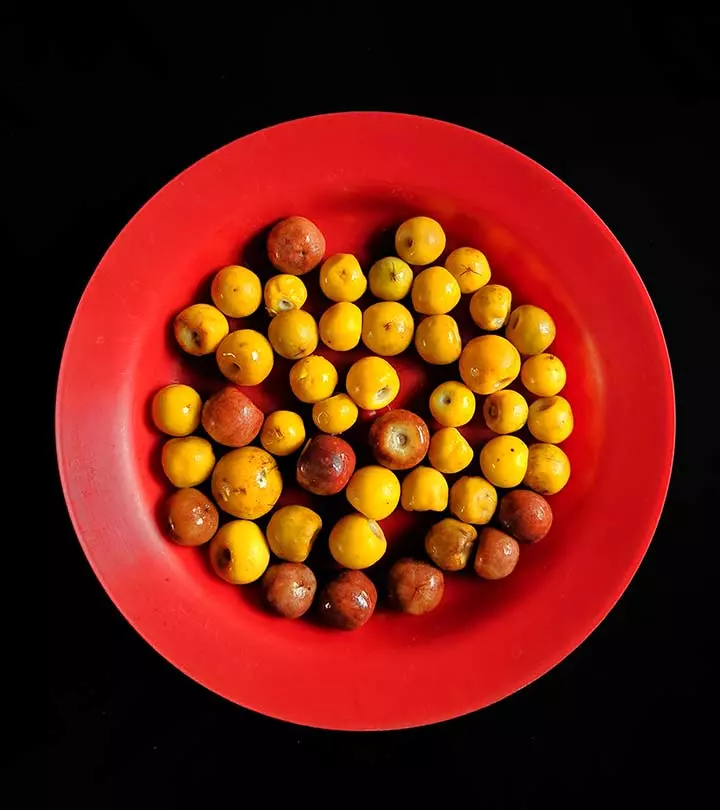
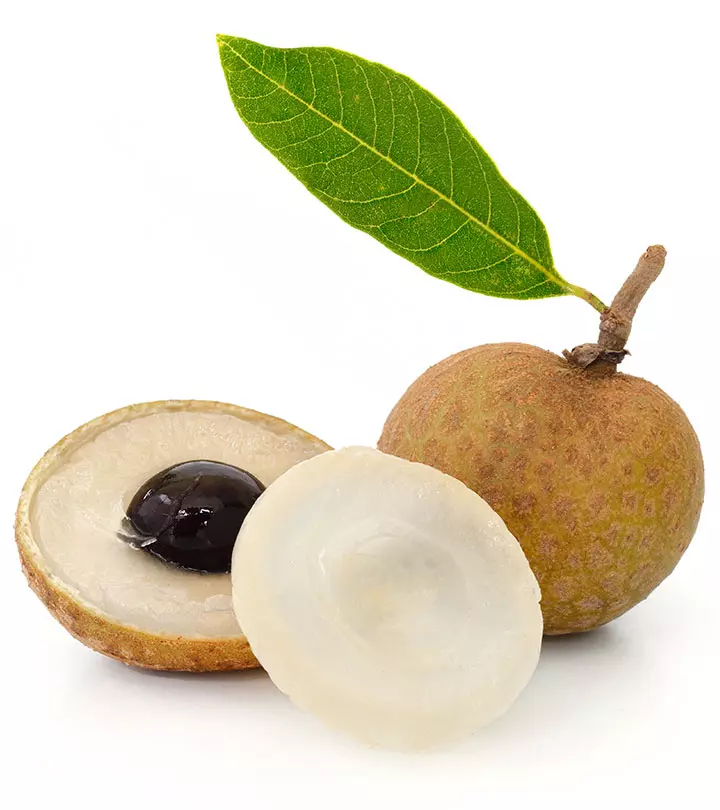
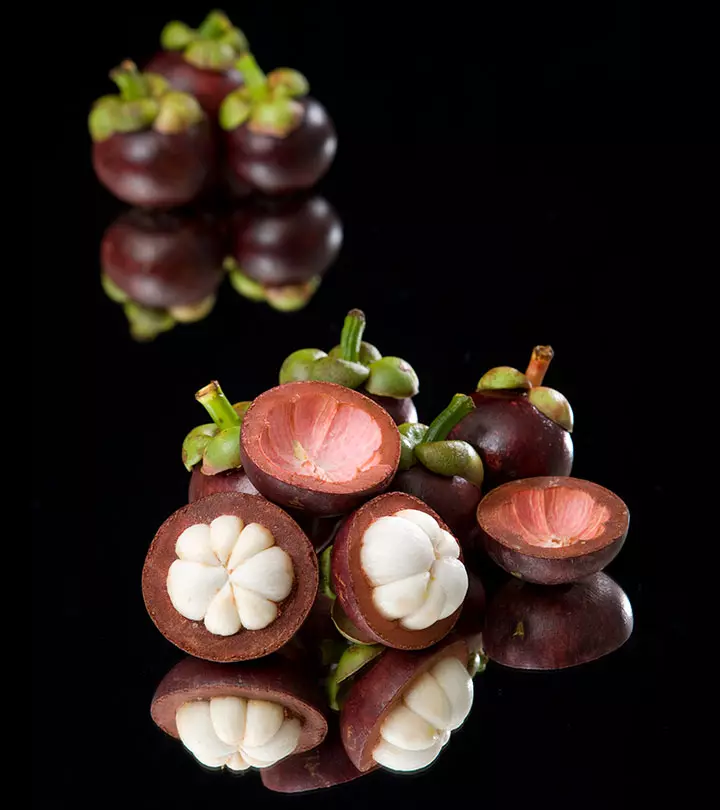
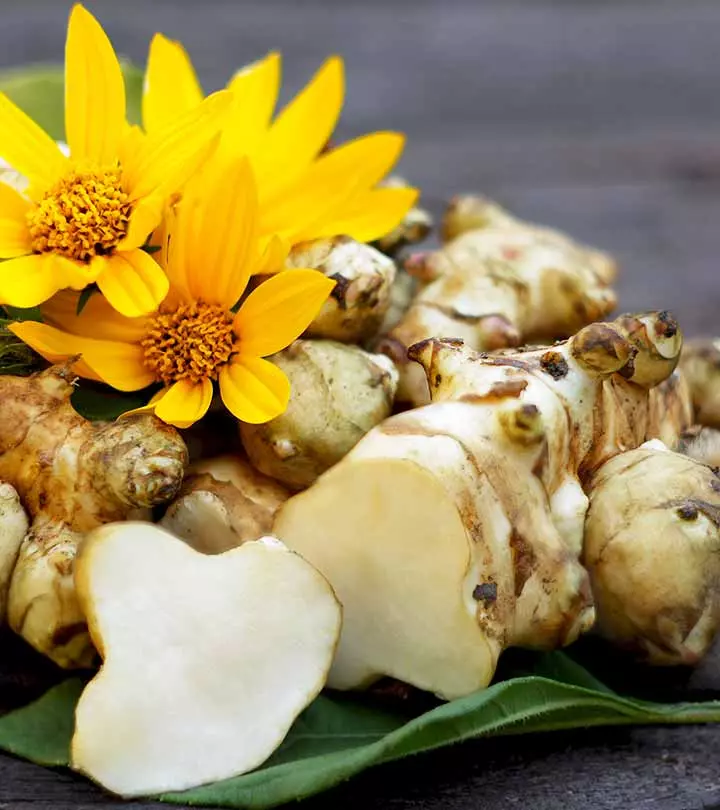
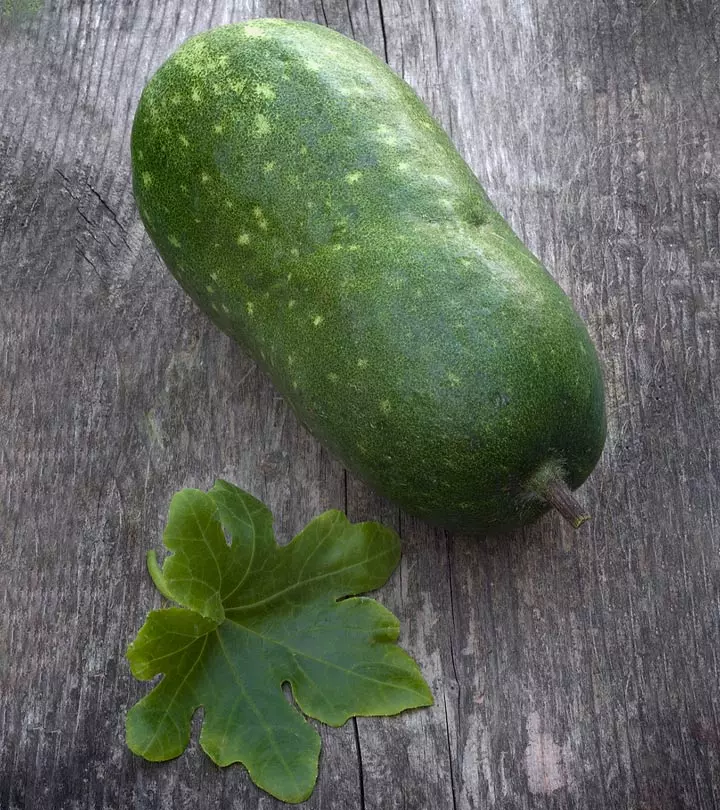
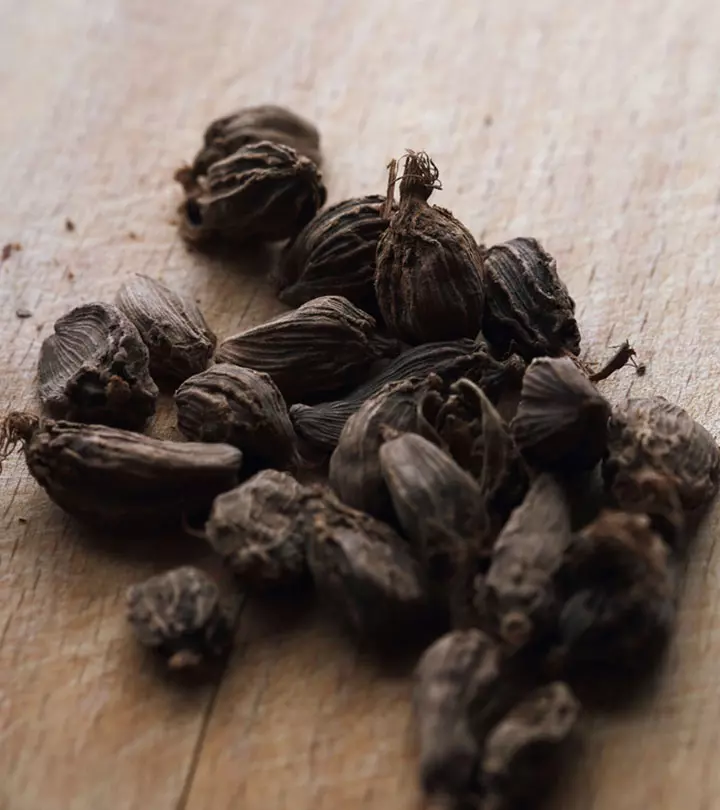
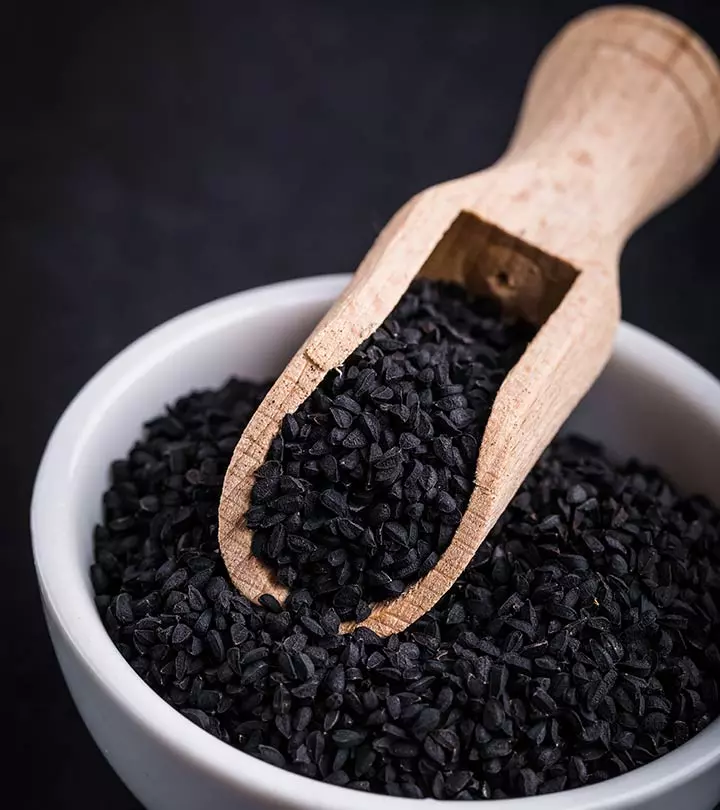
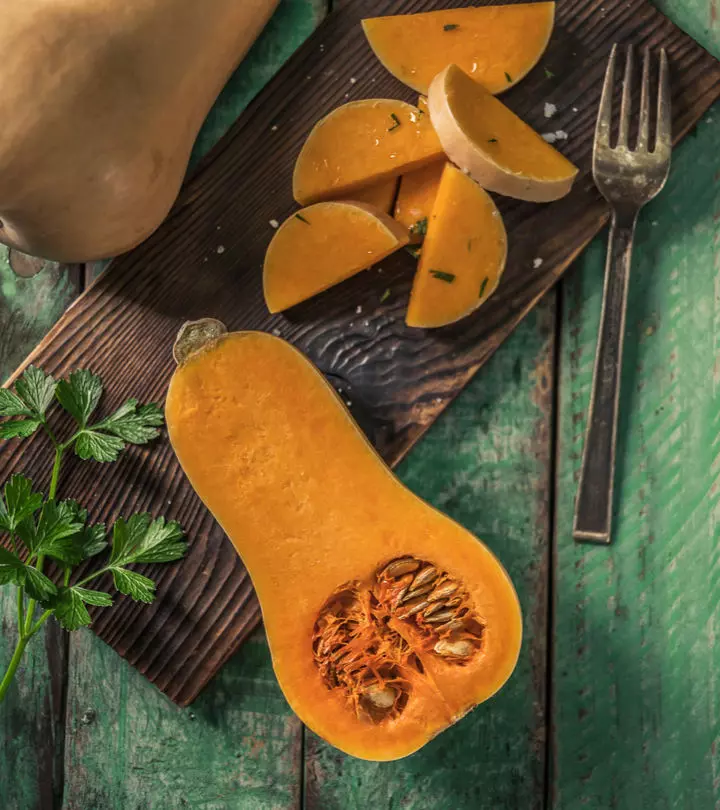
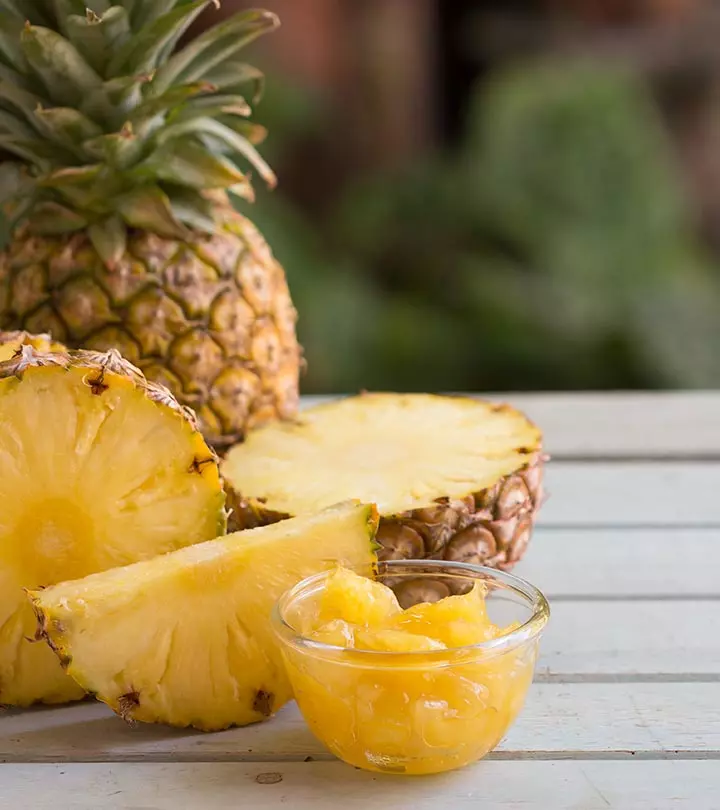

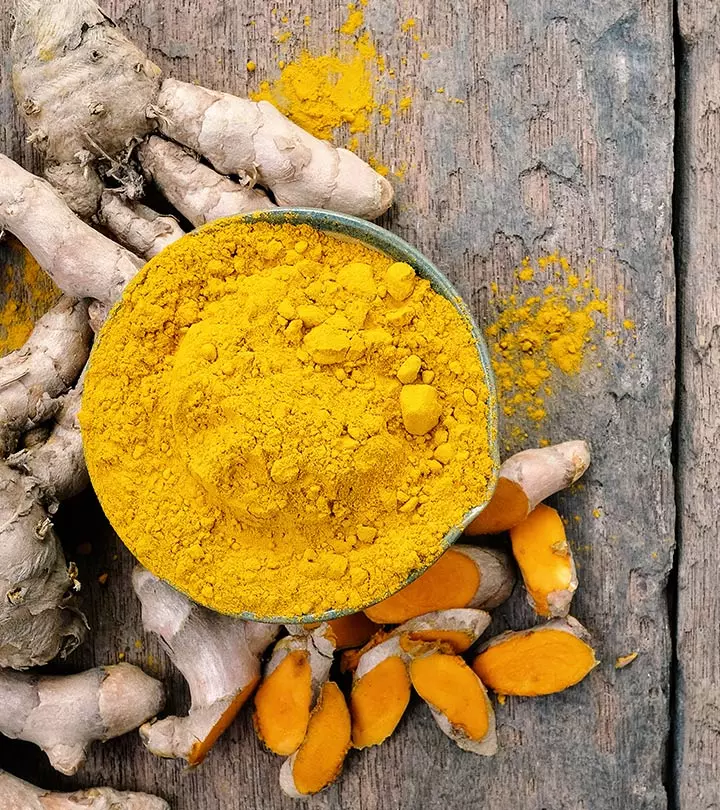
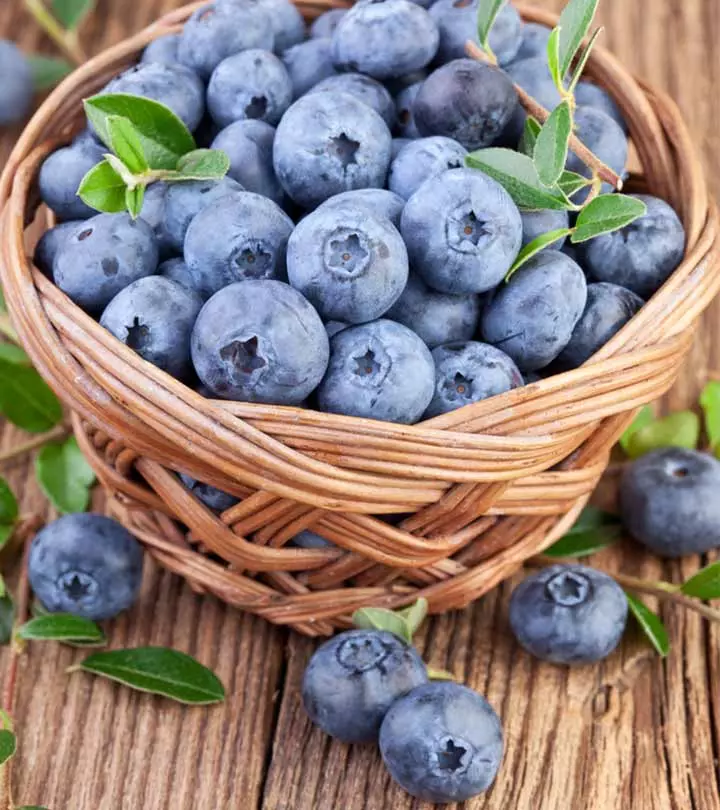
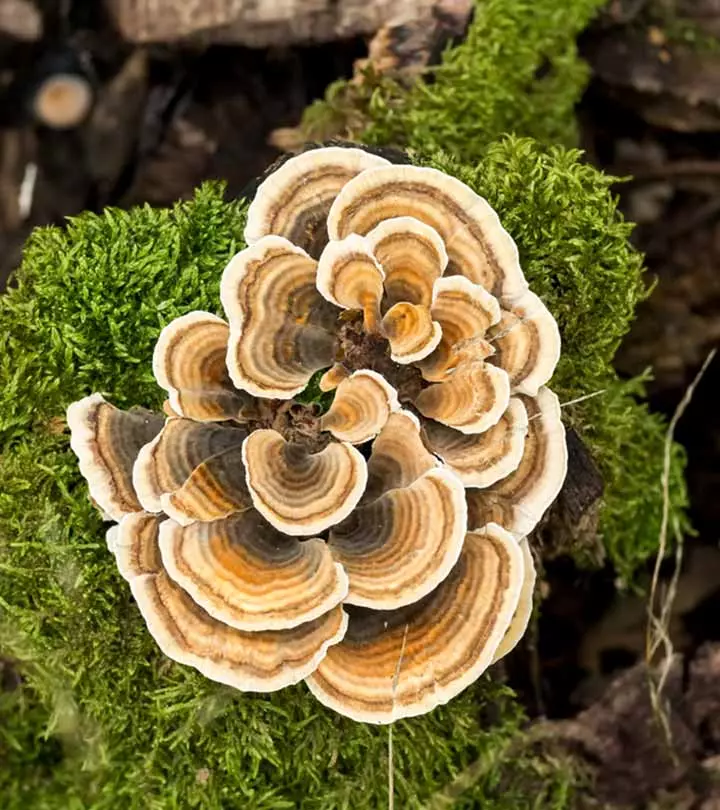




Community Experiences
Join the conversation and become a part of our empowering community! Share your stories, experiences, and insights to connect with other beauty, lifestyle, and health enthusiasts.